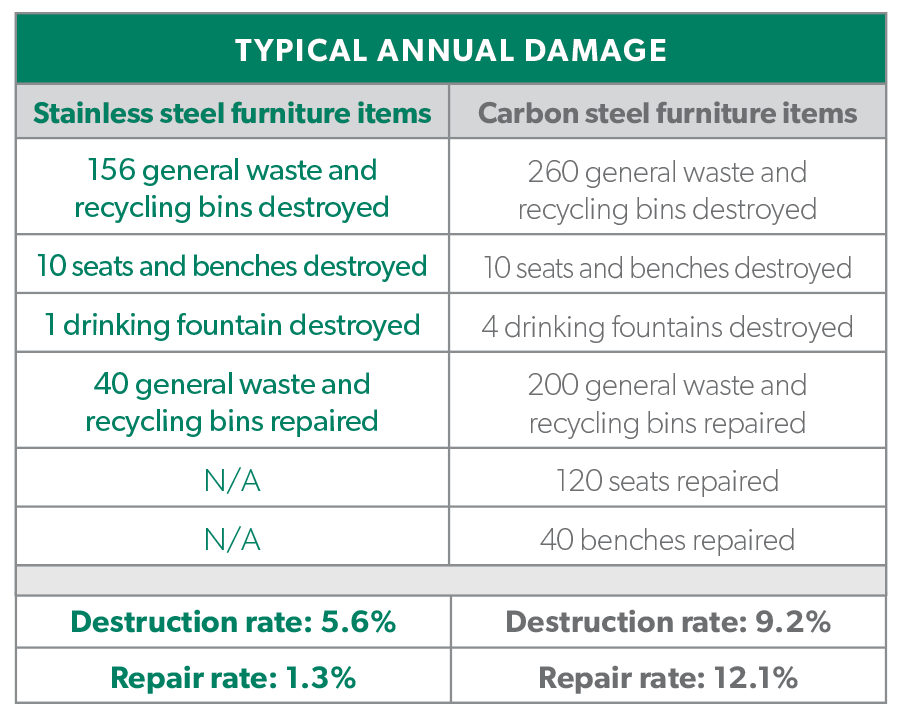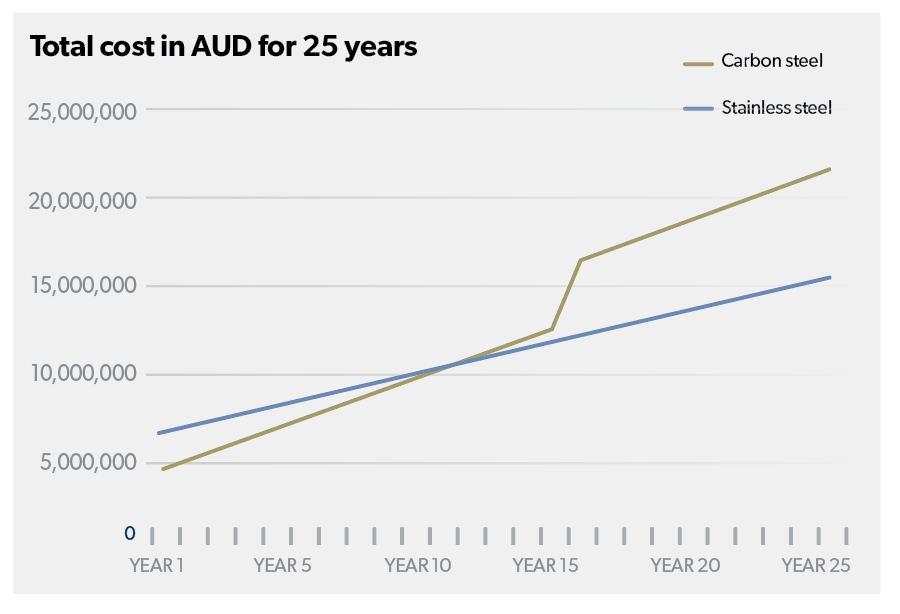
2 minute read
Life cycle costing IN THE CITY OF MELBOURNE
Street furniture defines a city’s urban landscape, and stainless steel is becoming a material of choice for its long-term cost benefits in addition to its sleek designs, durability, and visual appeal.

Photo credit: The City of Melbourne
Advertisement
In Australia, the City of Melbourne has led the way in sustainable materials selection, undertaking a life cycle costing comparison study over a 25-year term between carbon steel and stainless steel for use in its public street furniture. The products studied and manufactured included 1200 general waste bins, 500 recycling bins, 800 seats, 400 benches and 80 drinking fountains. Two broad costing components were considered:
1) The initial (procurement) cost of the different products in the two materials.
2) The ongoing maintenance costs, including costs associated with the following:
a. Items physically destroyed when in situ and in service.
b. Repairable damage to items when in situ and in service, e.g., graffiti.
c. Any required repairs due to natural corrosion and degradation.

The total cost of products made from carbon steel was $21.1 million:
• $4 million in procurement costs.
• $4 million in early replacement (re-procurement) costs.
• $600,000 in maintenance costs (i.e., graffiti removal and re-coating of surfaces) per year.
The total cost of products made from stainless steel was $14.8 million:
• $6.2 million in procurement costs.
• $400,000 in costs per year.

Choose stainless steel
Stainless steel street furniture products realised a financial saving of $6.2 million over a 25-year term or $250,000 per year when compared with carbon steel. The stainless steel products are expected to last much longer than 25 years, delivering further cost savings for the City of Melbourne.
This article was adapted and originally published by world stainless association (www.worldstainless.org).




